General Assumptions
Starts with basic model questions on the start date of the model, tax rate assumption, working capital assumptions, and funding assumptions.
Revenue and Direct Cost Assumptions
Revenue assumptions are the anticipated factors that drive a company’s income generation over a specific period. These assumptions form the basis for financial projections and are crucial for planning and decision-making. In our model, we have included detailed assumptions on the Capacity of each Room (Nursery (0-2 years), Toddler (2-3 years), Pre-School (3-5 years)), as well as Worker To Child ratios per room (i.e. # of childcare workers required to work for a set amount of children based on age/room). For each Room (Nursery, Toddler, preschool), we have provided detailed assumptions on the capacity of each room by children, the Room Daily Charge Per Child, the attendance growth, the churn, and the utilization % to measure how efficient each room is.
We have also included Direct Costs of running a Day Care Center with Wage assumptions for Worker staff working in each Room provided, along with the # of Workers required depending on the worker-child ratio for each Room. We have also included different pay levels for Workers depending on their level of qualification.
Operating Expenses Assumptions
Operating expense assumptions are typically based on historical data, industry benchmarks, market trends, and management’s judgment. They are crucial for estimating the business’s total cost and determining profitability. Like revenue assumptions, it’s essential to regularly review and adjust operating expense assumptions to reflect changes in the business environment and ensure the accuracy of financial forecasts. In our model, we have included detailed inputs on Staff costs (Center Manager, Chef, Other) and Typical Operational Expenditure items likely for a Day Care Center business, including Rent, Supplies & Equipment costs, Food & Nutrition costs, Cleaning & Maintenance, Utilities, Licensing Fees & Insurance, Professional Services Fees and Other costs. However, you can add any other expenses relevant to your business to this sheet.
Funding, Capex, and Other Assumptions
Capital expenditure (Capex) assumptions refer to the anticipated investments a company plans to make in long-term assets, such as property, plant, equipment, and technology, over a specific period. These assumptions are crucial for financial planning, budgeting, and forecasting, impacting the company’s cash flow, profitability, and growth prospects. We have included an ‘Initial Costs’ schedule, which shows the main costs of operating a Day Care Center business, including Renovation + Improvements, Playground equipment, Educational Materials & Toys, Furniture, Technology Systems, and Other Costs (including Goodwill if you have purchased a Day Care center).
We have also included a Capital Structure assumption section (showing the % of Initial Costs funded by Equity vs Debt).
A Fixed asset schedule has been included, showing the main items likely to be on a company’s capex sheet, the total costs, and the assumed useful life of each asset.
Monthly Projections (10-year period)
We have broken down projections on a month-by-month basis when projecting income statements, balance sheets, and cash flow statements. The monthly forecasts are provided over a 10-year time frame. This is particularly useful for businesses looking at month-on-month trends and insights, which leads to better decision-making and budgeting should there be a need to raise more capital, pursue growth opportunities from excess capital, or pay down interest-bearing debt. Monthly projections also help a business ascertain what performance may be seasonal in nature when looking at growth projections on a month-over-previous-year’s-month basis.
Annual Projections (10 Year period)
The model has Annualized Financial Projections of Income Statement, Balance Sheet, and Cash Flow Statement over a 10-year time frame. Annual projections provide an excellent overview of expected revenues, expenses, profits, cash flow, and other key financial metrics for the upcoming year. Yearly predictions are essential for any company’s strategic planning, budgeting, fundraising, and performance evaluation at any stage of their business cycle.
Day Care Center Financial Metrics & Other Metrics
Day Care Center Financial metrics and Ratios have been included, which highlight Revenue by Room (Nursery Room, Toddler Room, Pre-School Room), Utilization % by Room, Gross Margin % by Room, Direct Costs and Operational Costs as a % of Revenue, Profitability Ratios – all over a 10-year time frame.
Summary of Financial Statements (10-Year period)
Summarized Financial Statements over a 10-year time frame help for better snapshots of financial performance. Income Statement, Balance Sheet, and Cash Flow Statement are all provided.
Charts
Charts available including Profitability Margins (Gross Profit Margin, EBITDA Margin, and Net Profit Margin), Revenue vs Direct Costs Projections, Revenue By Category, and Cashflow Summary
DCF Valuation
We have included a Discounted Cash Flow (DCF) Valuation model showing the Business’s Net Present Value (NPV) based on a series of growth rates and assumptions. Weighted Average Cost of Capital Assumptions is also provided, including Risk-Free rate, Beta, Risk Premium, and Equity Risk Premium. A DCF valuation is a method used to estimate the value of an investment, business, or asset by discounting its expected future cash flows to present value. It is based on the principle that the value of an investment is determined by the present value of its future cash flows. The DCF valuation technique is widely used in finance, investment analysis, and corporate finance for making investment decisions, determining the fair value of securities, and evaluating the worth of businesses.
Depreciation Schedule
The detailed depreciation schedule shows additions/disposals to the business’ fixed asset register. Sections included Renovation + Improvements, Playground equipment, Educational Materials & Toys, Furniture, Technology Systems, and Others.
Debt Schedule
Debt schedule provided with interest rate assumptions and payback period assumptions included.
Equity Schedule
Equity schedule provided with assumptions on all investments into the business by investors or owners.

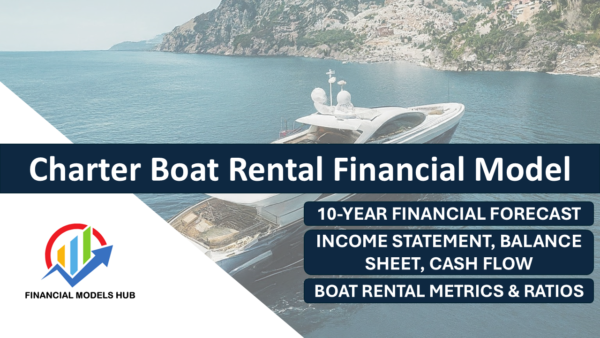
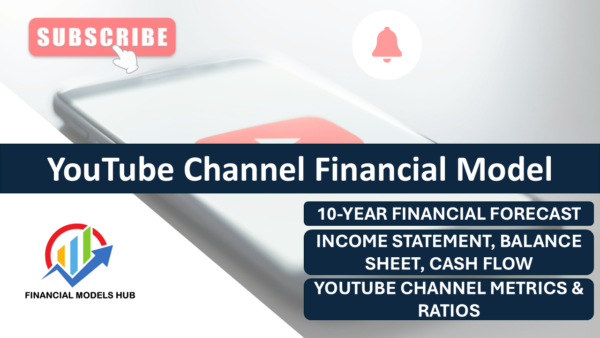

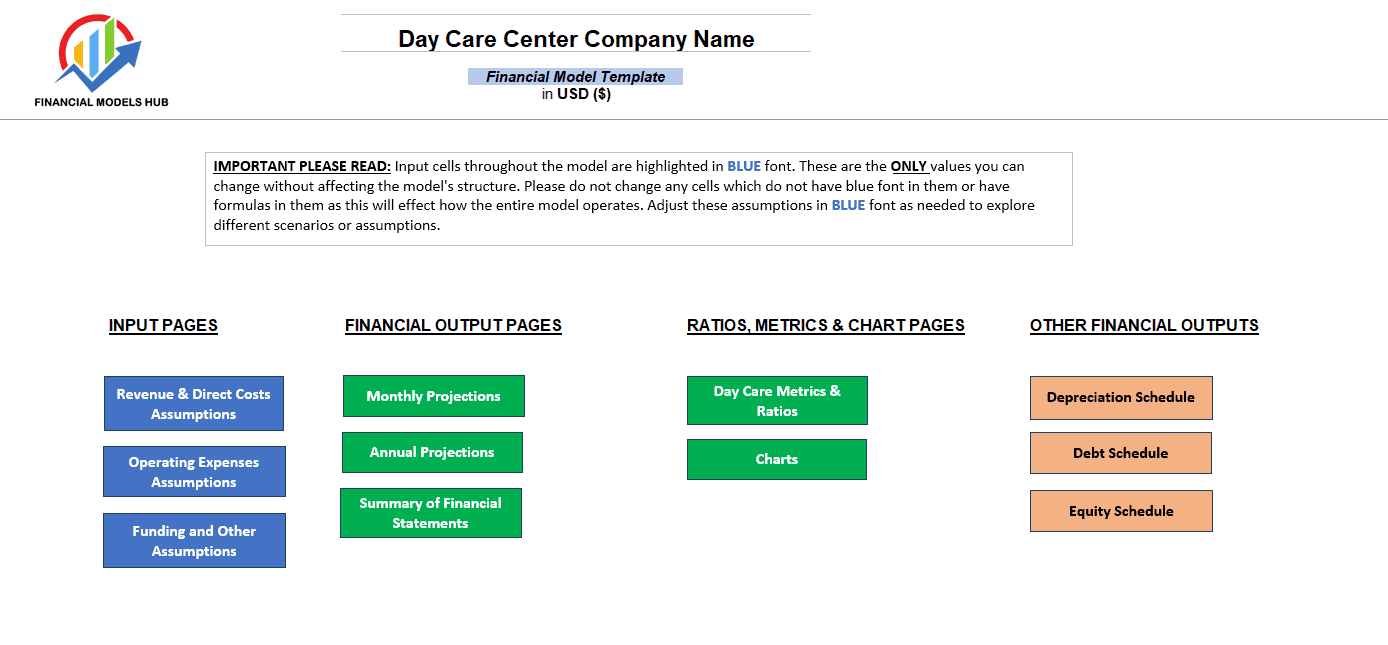

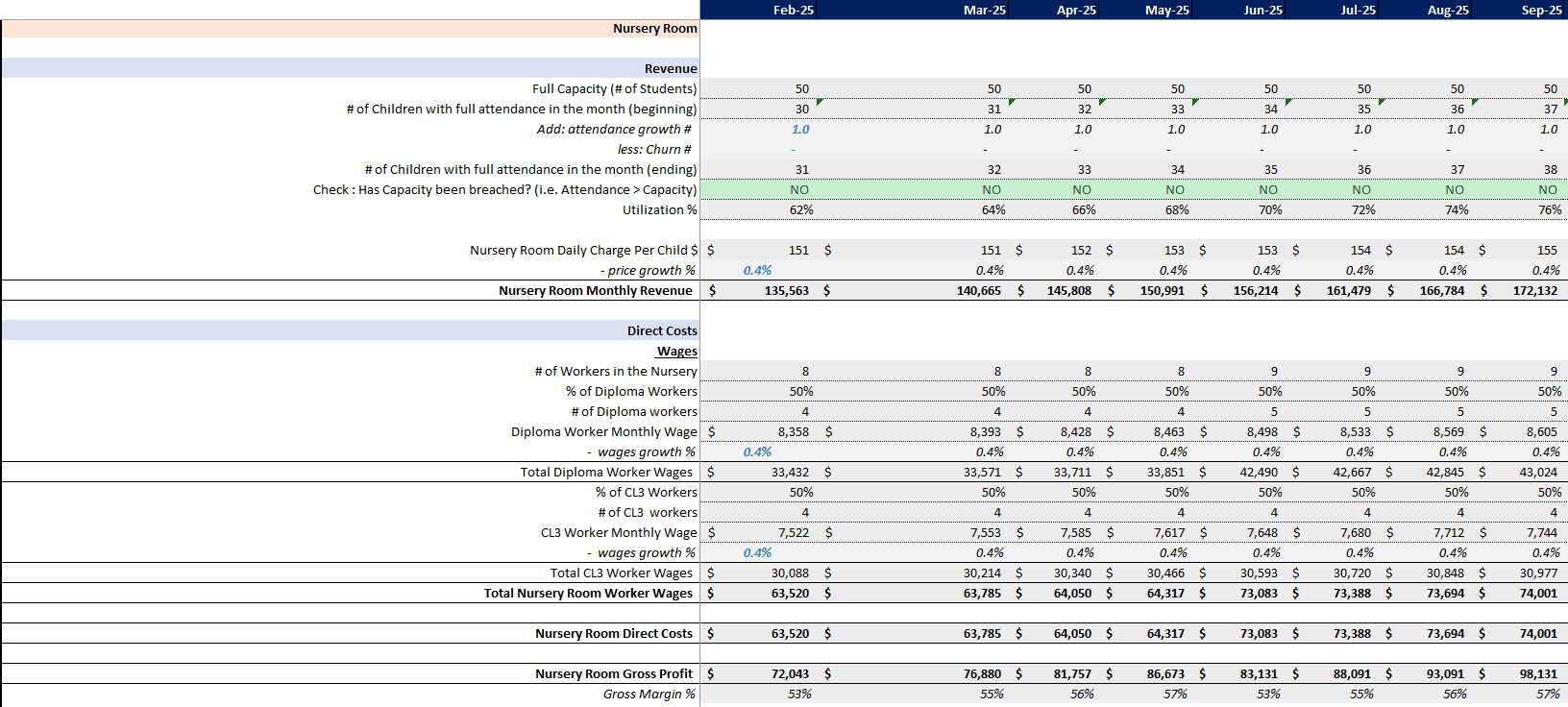
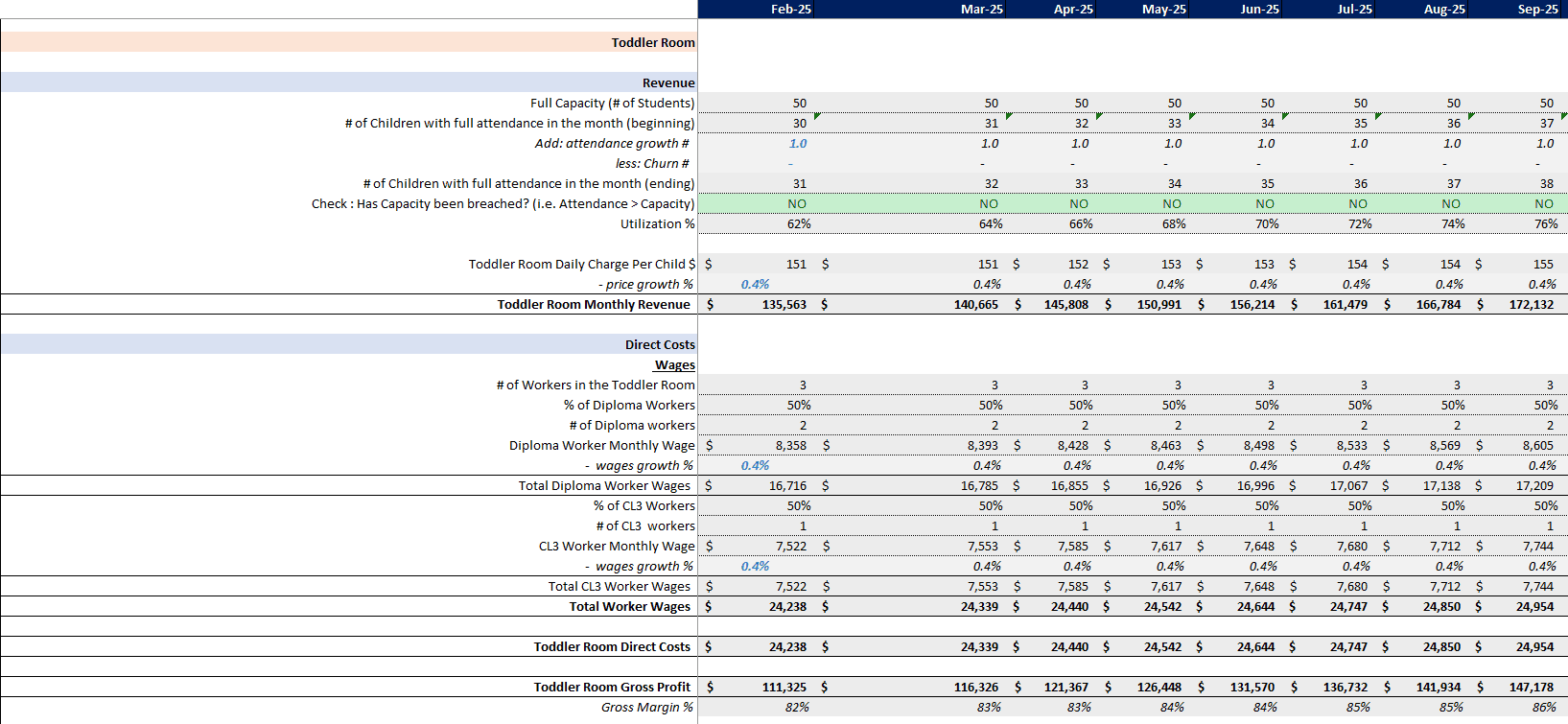
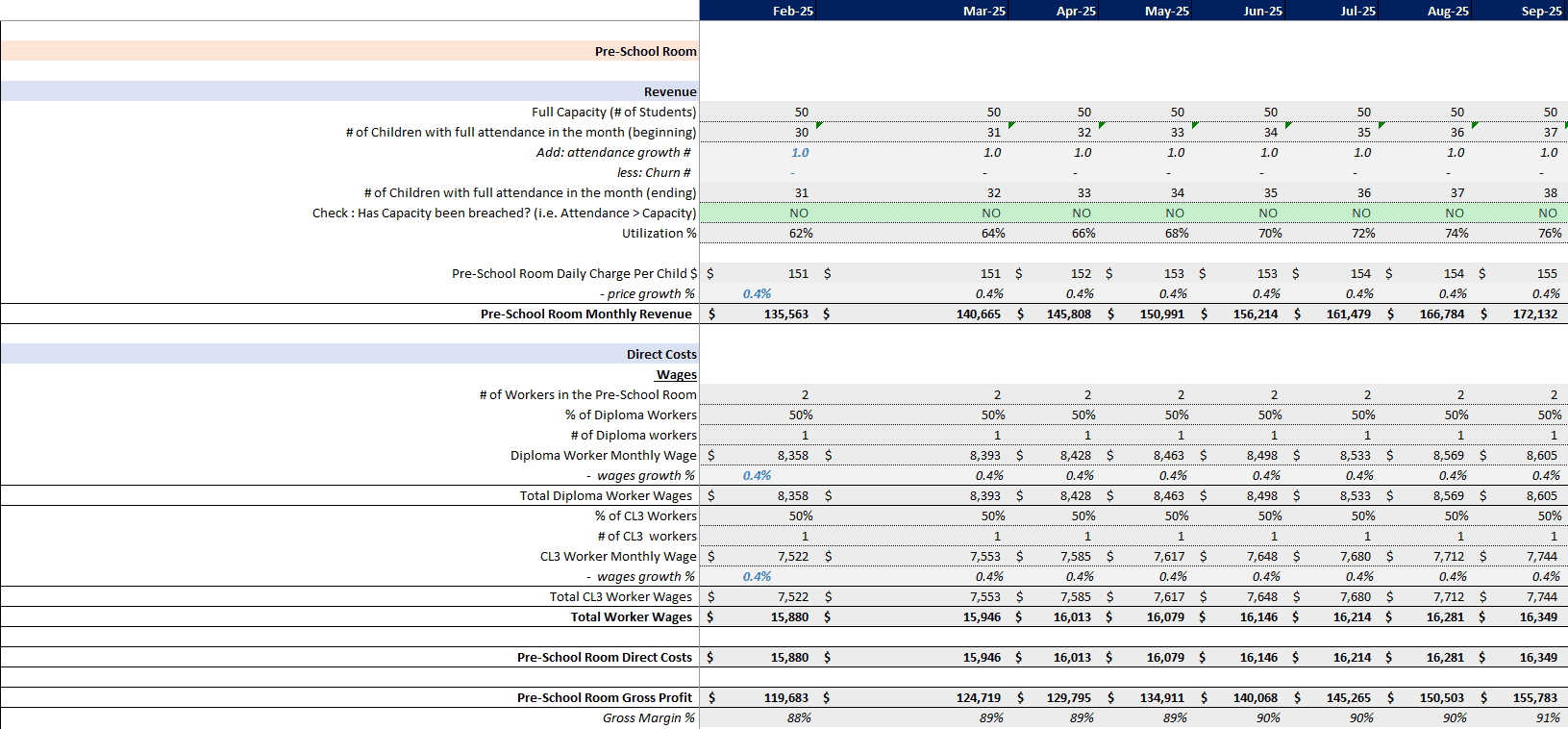
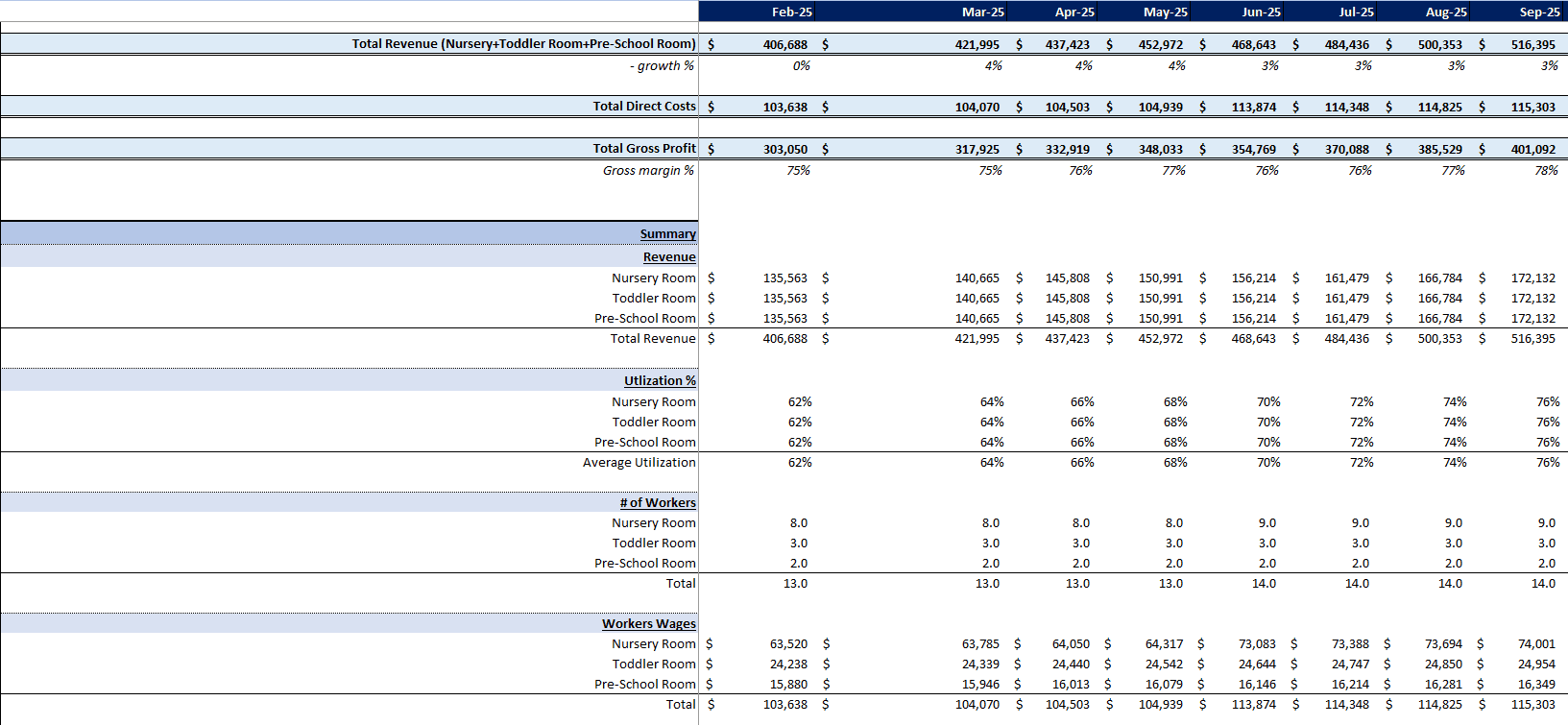
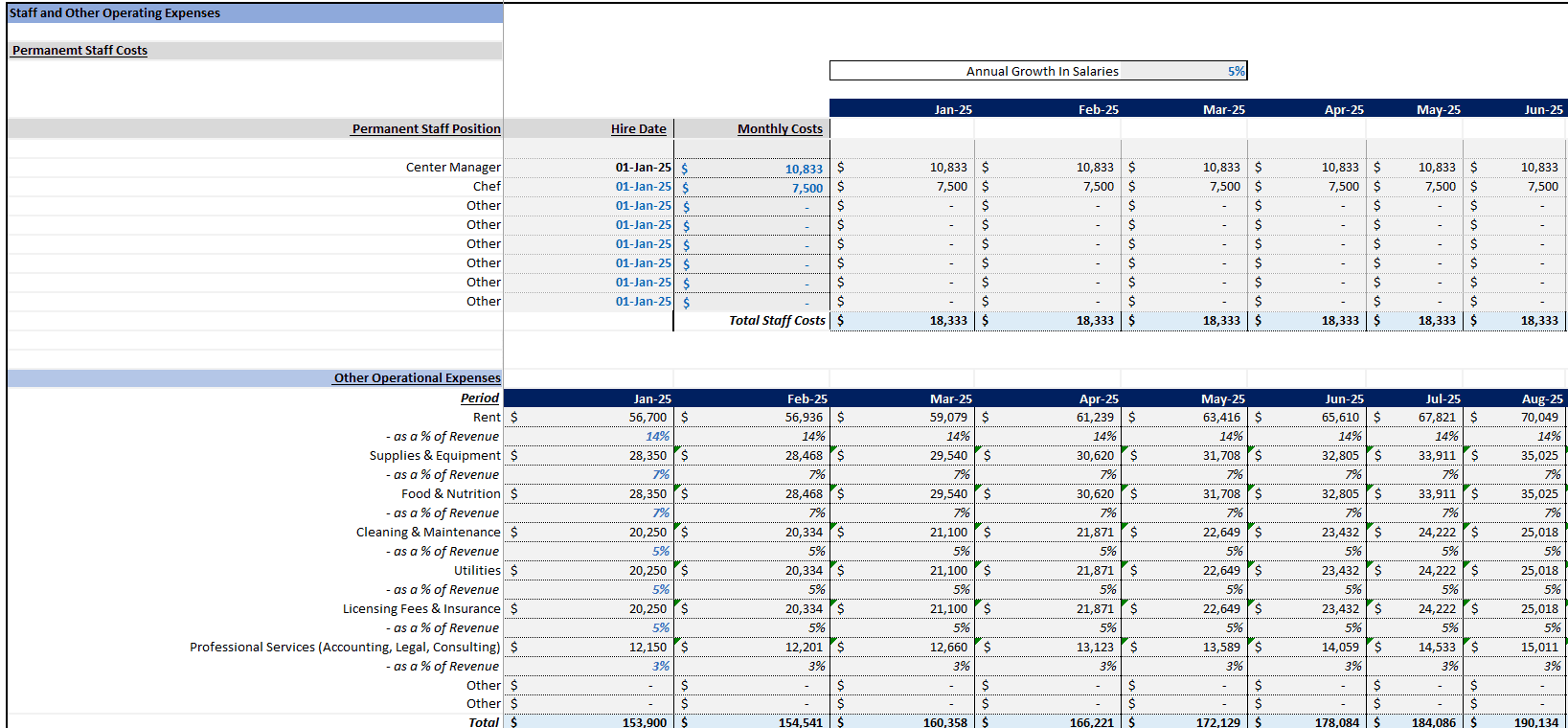
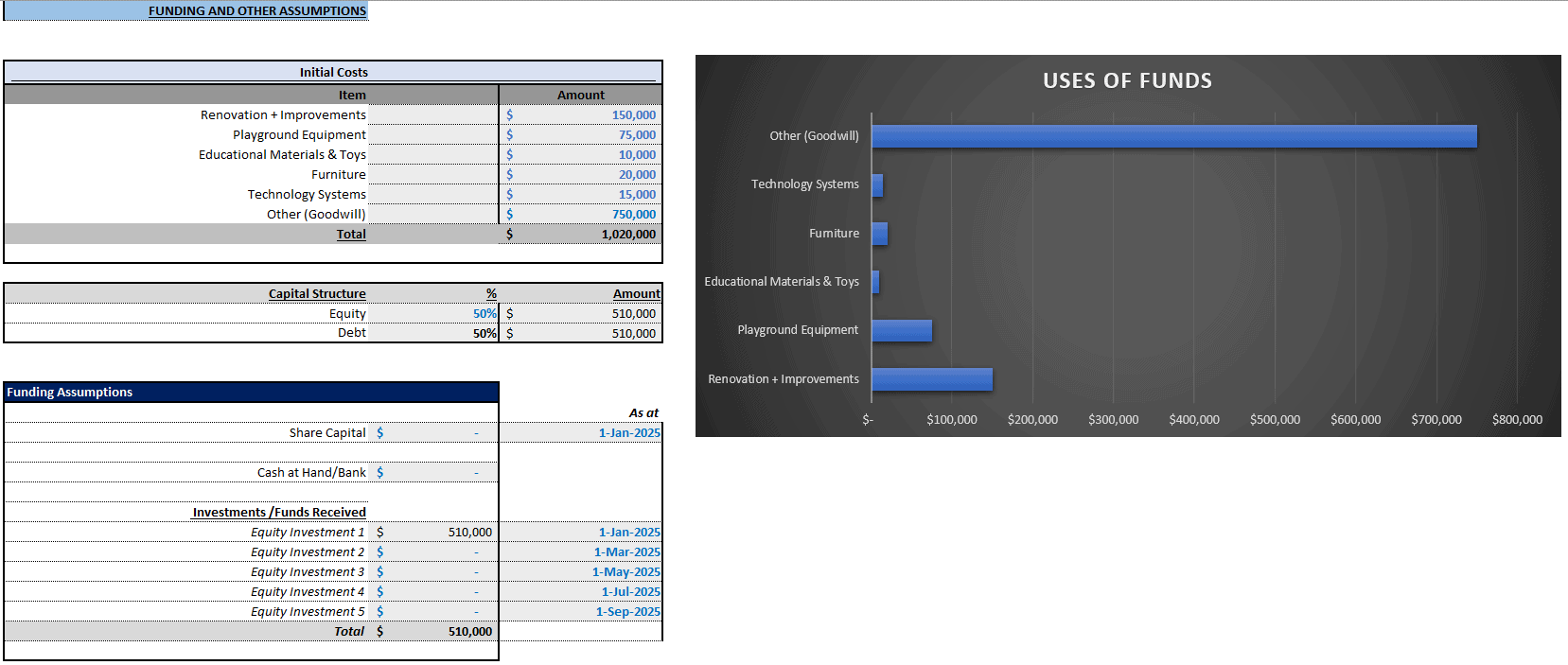
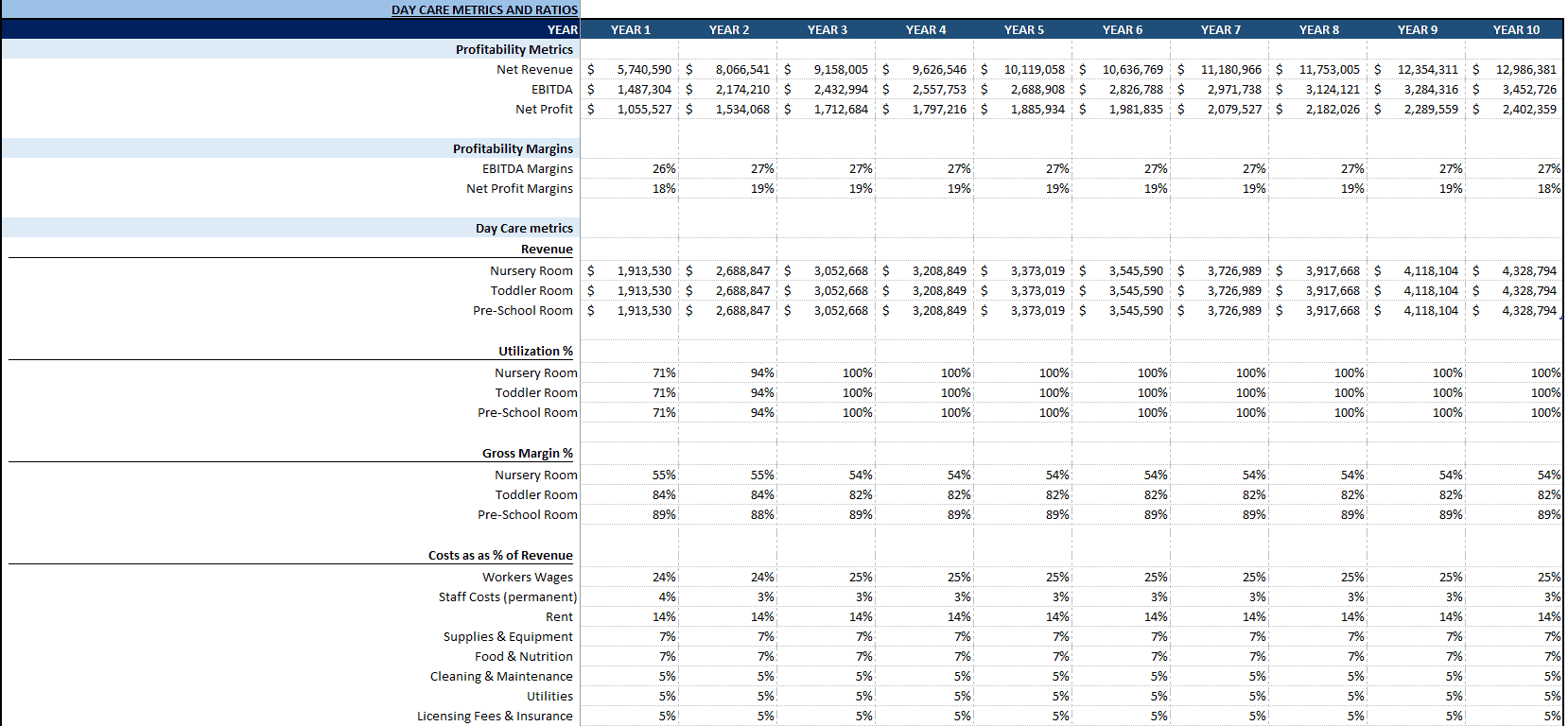
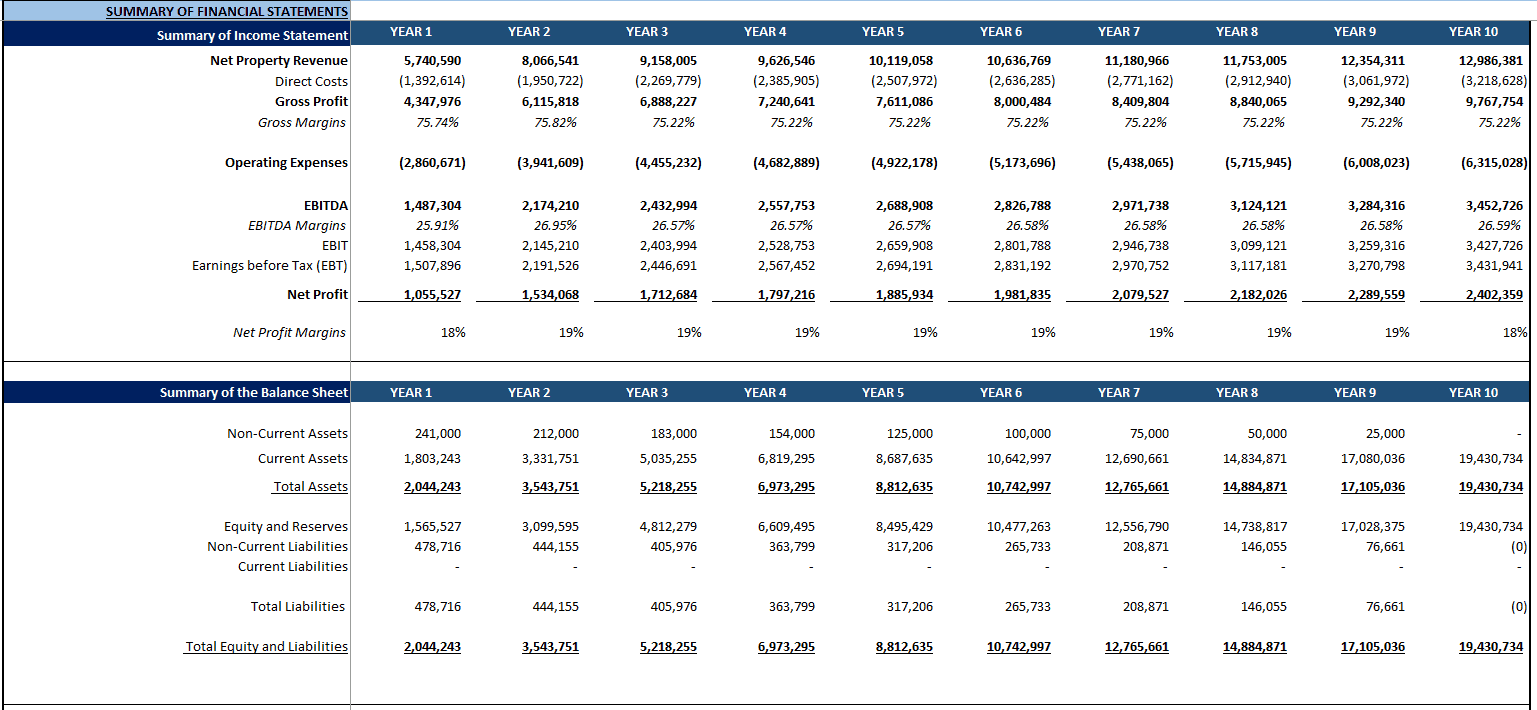



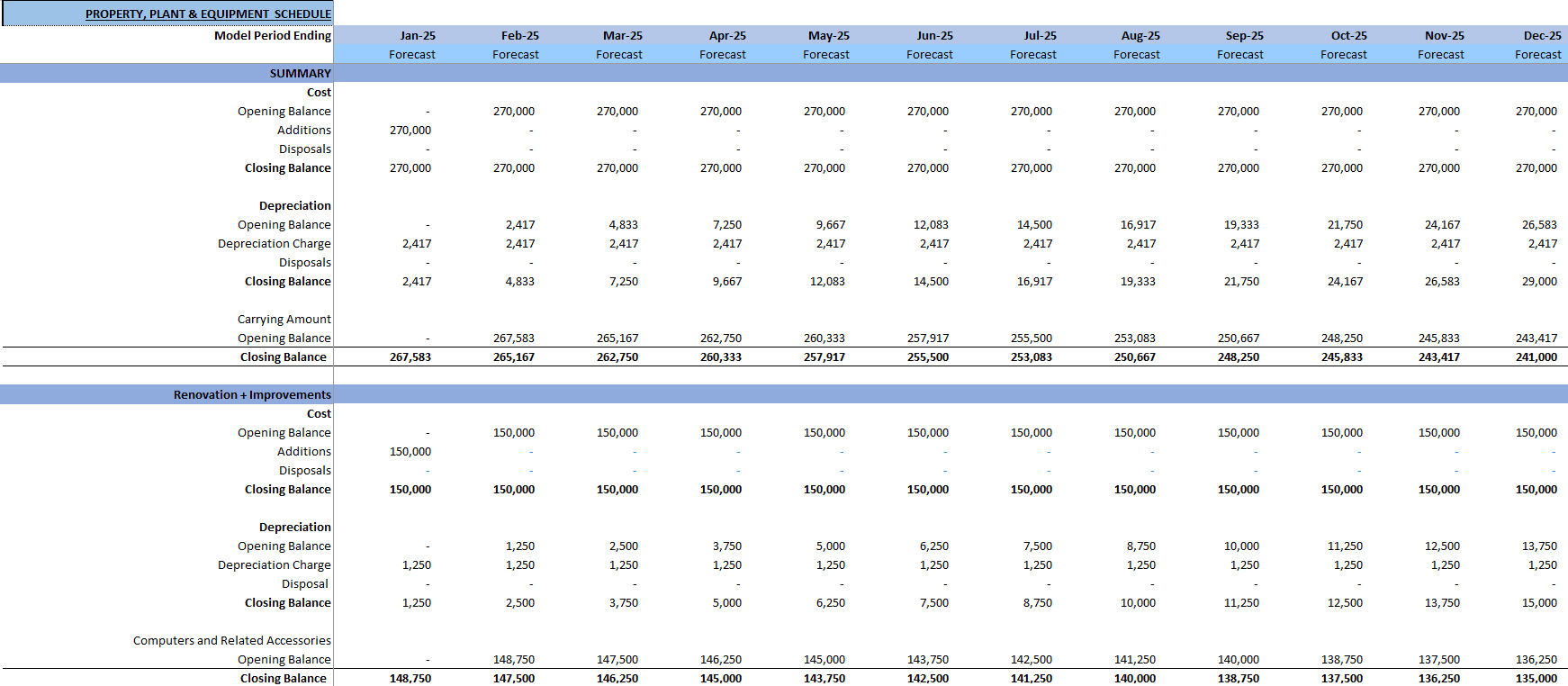





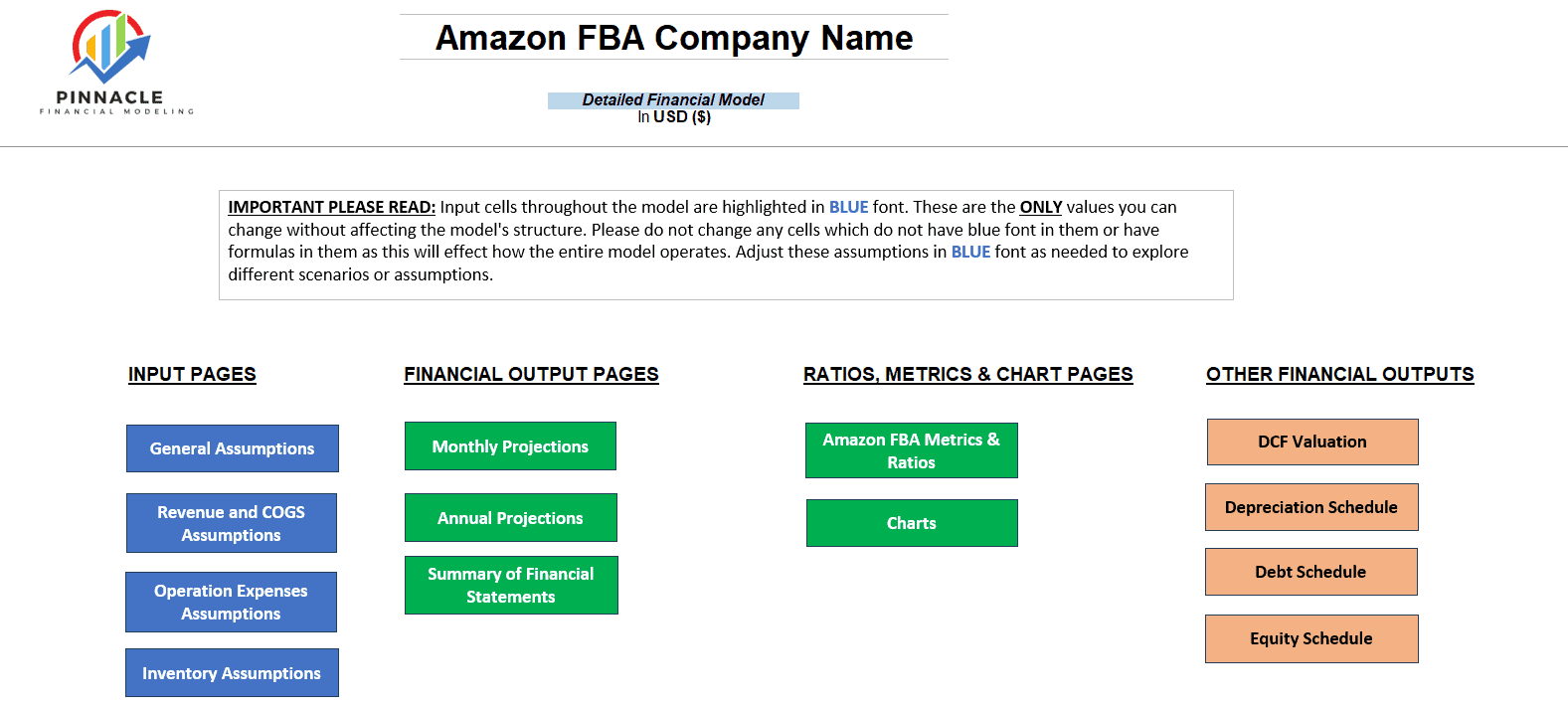




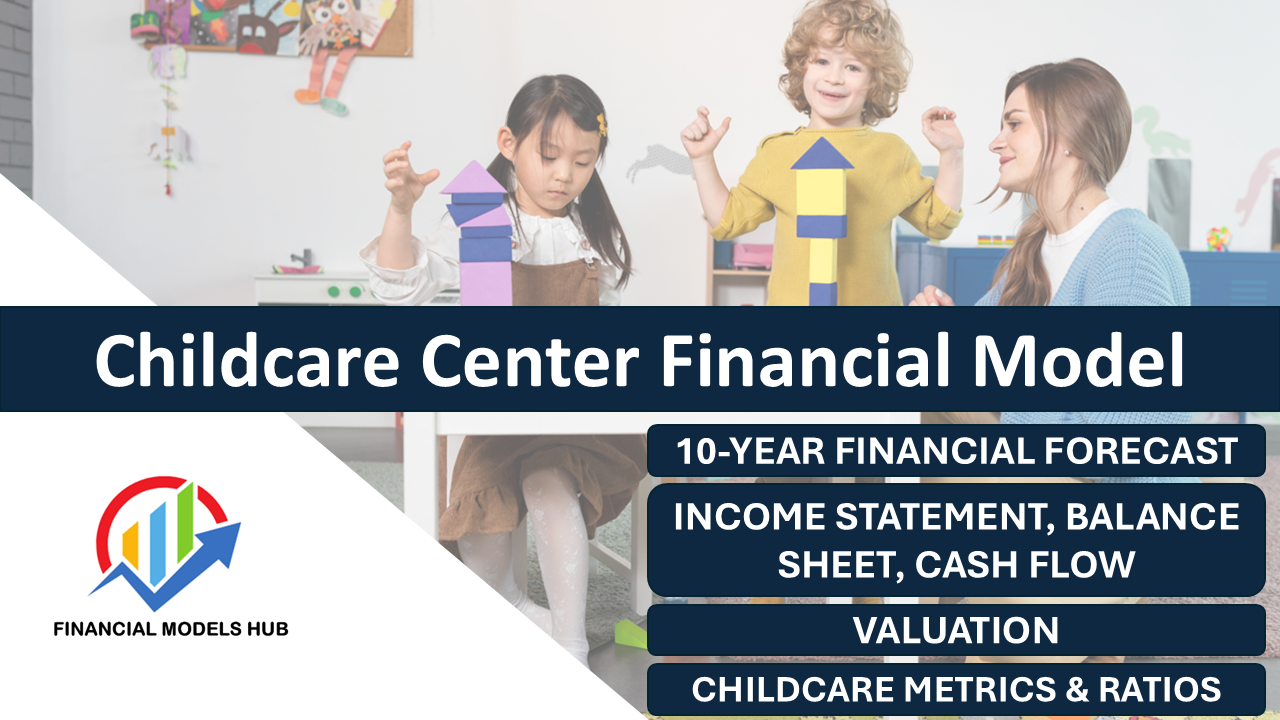

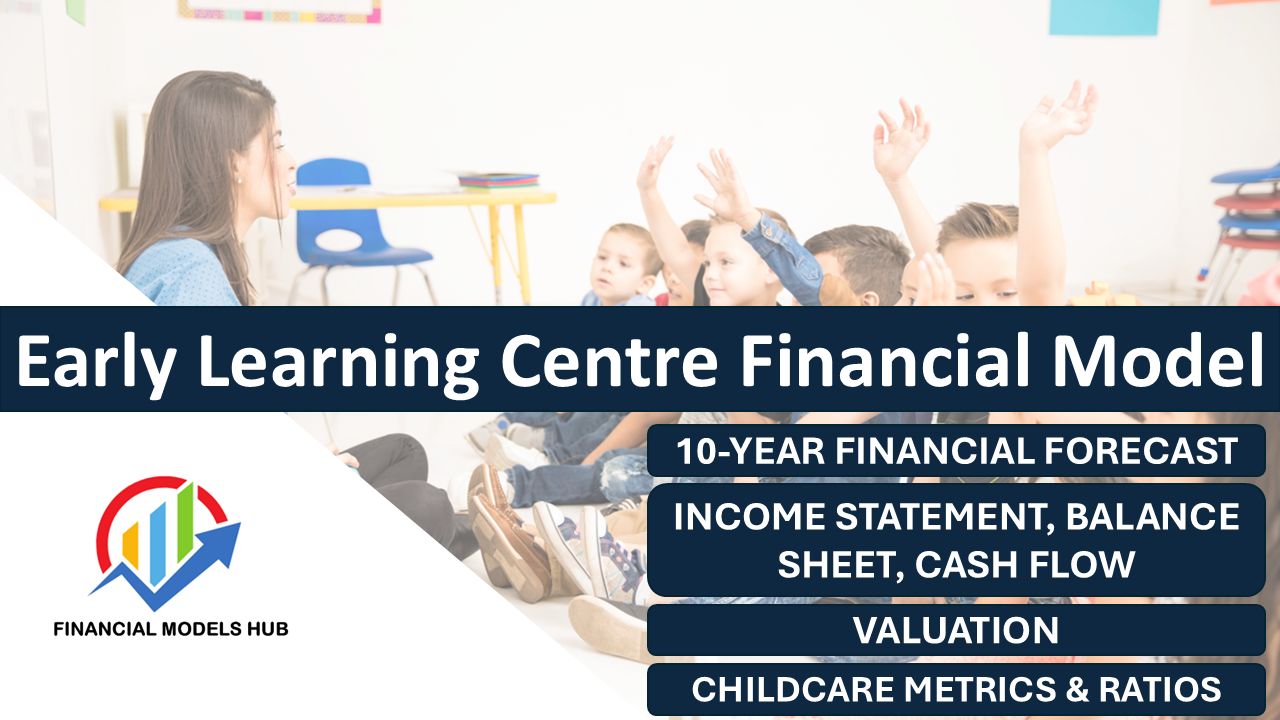








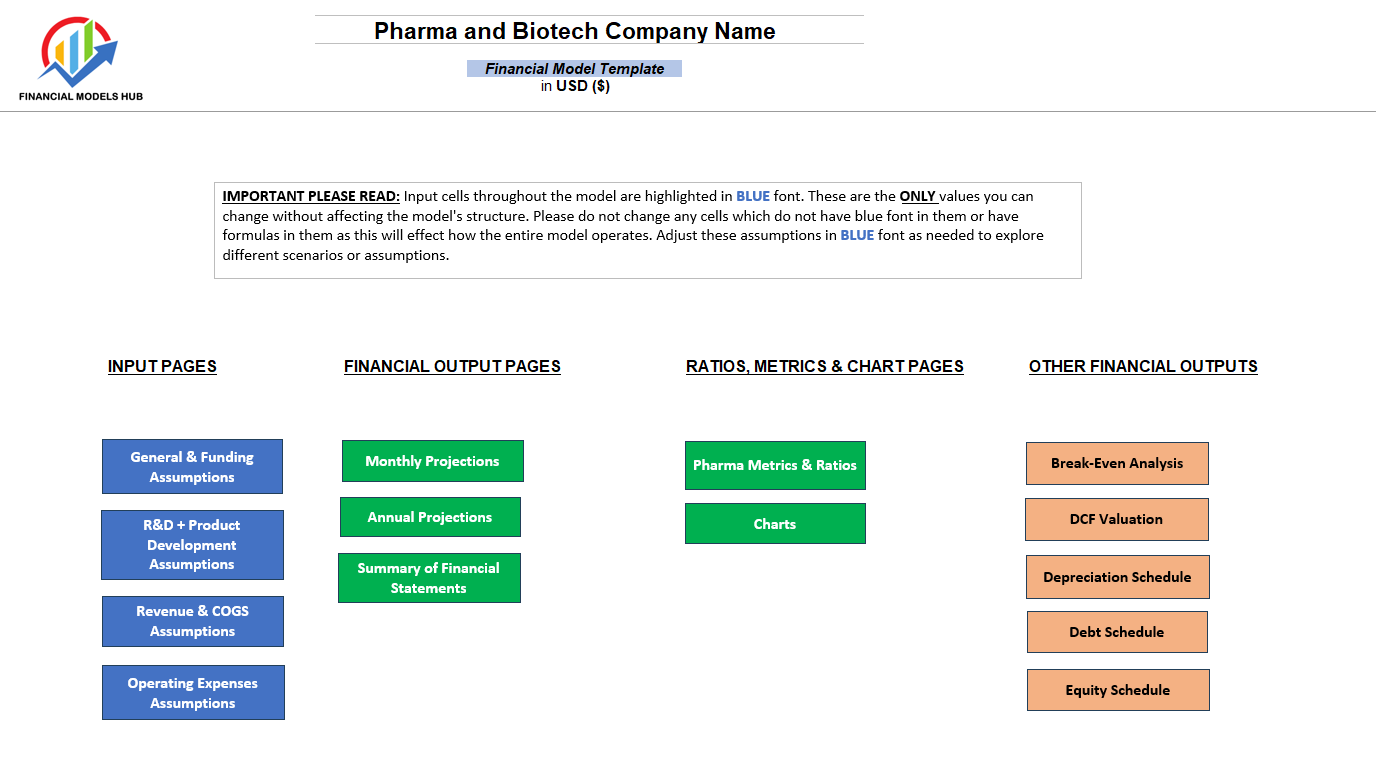



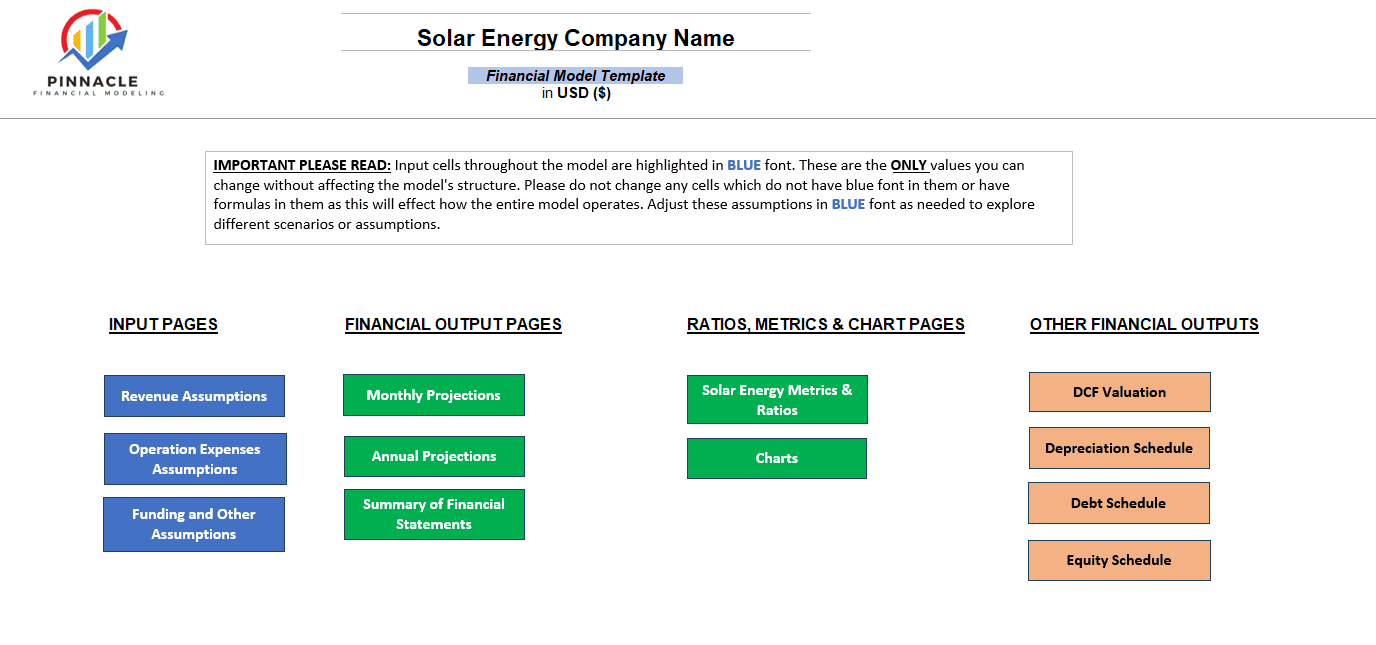
Jessica W –
The template is very intuitive, and I was able to dive right in. Very impressed!